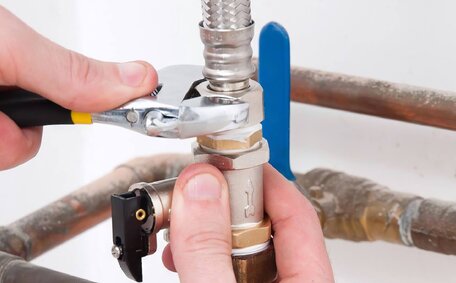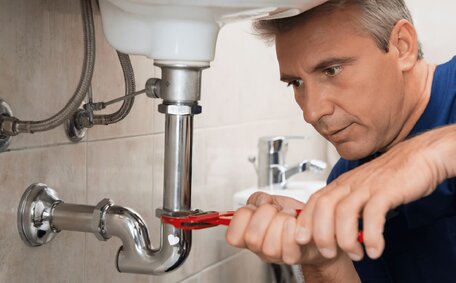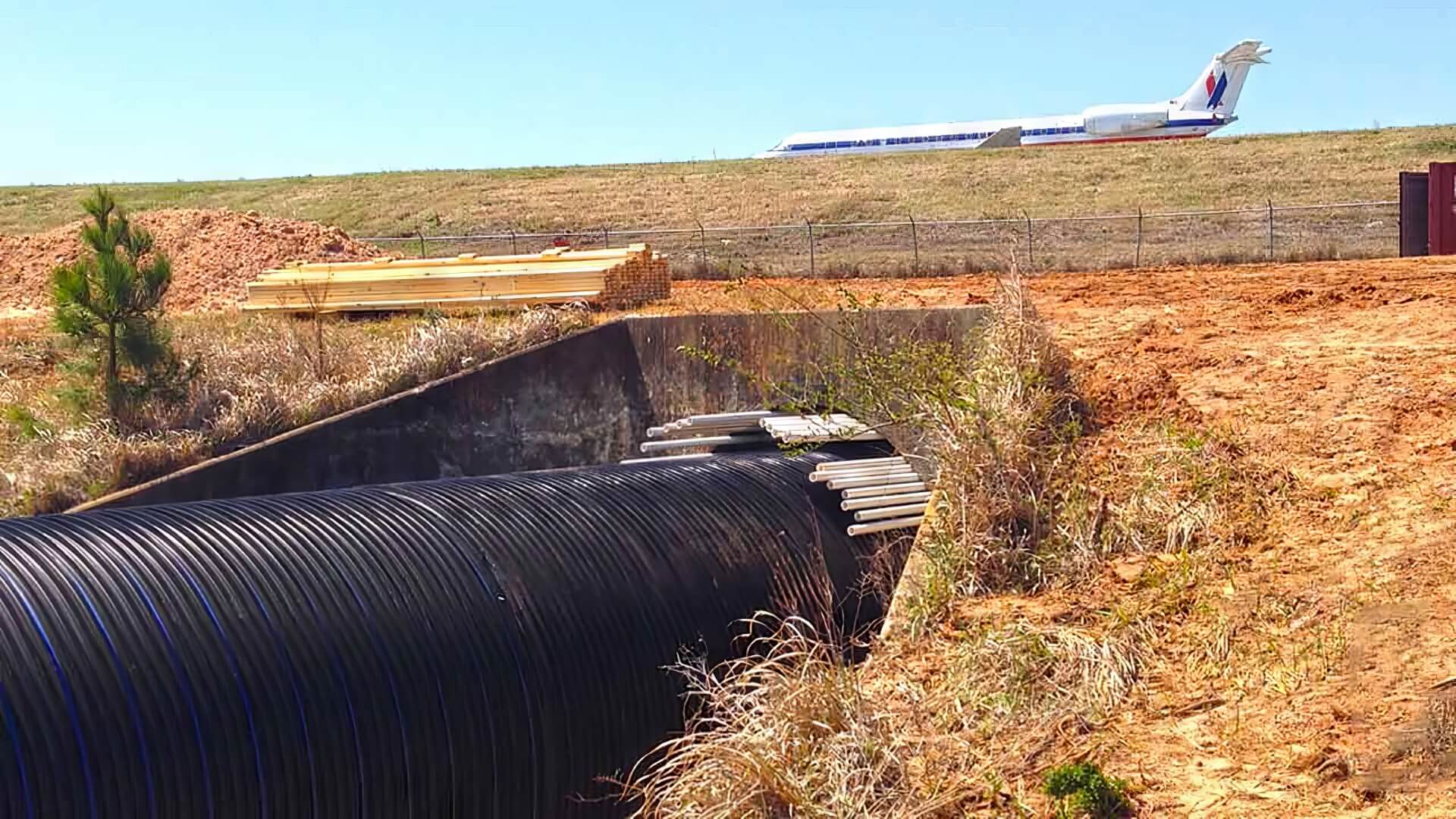
Is a broken tap an emergency?
A broken tap that is causing flooding, water wastage or damage should be treated as a plumbing emergency. Call our 24/7 emergency plumbers for prompt repairs to burst pipes, damaged taps, water leaks and more.
Read MoreSump pumps are essential devices that help keep your basement dry. Its primary function is to ensure the sump pump can efficiently remove water that might otherwise inundate your basement, pooling in the water sump pit. The key components of a sump pump include:
During normal operation, your sump pump running efficiently channels water to the discharge lines as groundwater and rainwater seep into the pit. When the water level gets high enough, the float switch turns on the pump. The pump then pushes unwanted moisture into your yard through the discharge pipe, connected to the drain tile system, positioned at least 20 feet away.
Understanding your sump pump’s needs is crucial for maintaining a dry basement and preventing water damage. Grasping this foundation is what homeowners need know about sump pump maintenance and troubleshooting.
There are several indicators that your sump pump may be failing:
Understanding what to do when your sump pump warning signs emerge can protect against basement flooding. To prevent a flooded basement, engage our plumbers, who can help diagnose any issues if you’re unsure about your sump pump’s functionality.
Being vigilant is vital when your sump pump fails, as it can lead to water buildup and potential flooding in your basement. In this scenario, water can quickly accumulate in the drain tile system, posing a risk of flooding. Just a few inches of standing water can necessitate expensive damage restoration, outlining how much water impact on costs can be significant.
Standing water cultivates a haven for hazardous mold mildew, which can raise significant health concerns. Mould can thrive in damp conditions, possibly causing allergies or respiratory issues when inhaled. Preventing flooding and promptly removing excess water is crucial.
If neglected, the pump may overwork and fail, putting stress on your home’s perimeter drainage system. Large volumes of water can cause sump pump problems, potentially forcing water back up in the discharge line or pit, and risking infiltration into your foundation’s drain tiles. This added pressure can lead to significant sump pump problems, like displacement of underground pipes and development of sinkholes or soil erosion.
There are many reasons sump pump failures occur:
Knowing the most common sump pump failure points helps homeowners take preventive action and address issues promptly.
Troubleshooting a failed sump pump is crucial to prevent flooding and water damage. Follow these steps:
Taking quick action when your sump pump fails can make all the difference in preventing costly water emergencies.
If your sump pump fails, there are some temporary solutions you can try while waiting for repairs:
While these methods may buy you some time, the root cause of the pump failure still needs to be diagnosed and resolved. Contact a professional plumber promptly to inspect your system and prevent recurrent issues leading to water damage or flooding.
Performing regular maintenance is crucial for avoiding sump pump failure and the risk of flooding. Here are some key tasks homeowners can do:
Investing a little time upfront to get a sump pump installed and cared for can give homeowners peace of mind and help avoid water emergencies resulting from failures.
If after completing all troubleshooting steps your sump pump still malfunctions, it’s wise to contact a professional plumber. A knowledgeable plumber can ensure your sump pump working correctly, diagnosing why it might be malfunctioning.
Professional plumbers can test components such as the float switch, clear blockages, replace worn parts, and upgrade inadequate pumps as needed. They also ensure your home’s pump sizing is appropriate, channelling water into sump areas based on foundation size and water volume. Attempting complex repairs without expertise risks further equipment damage or flooding.
For North Ryde homeowners dealing with recurrent sump pump failures causing flooding or water backups, [Business Name]'s licenced technicians are available 24/7 to address issues promptly. We determine the root cause of problems and implement reliable solutions to get your system working efficiently again.
Don’t wait until you have standing water or mold growth to call. Get ahead of more costly water damage and gain peace of mind by having our experts assess your failing sump pump today. Call [Business Phone] or email [Business Email] to schedule service.
Investing in a backup sump pump is recommended to mitigate failure risk and ensure redundancy. There are a few options to consider:
Battery backup pumps run on a sealed lead-acid battery that automatically provides power to the pump during an outage. They can run for hours, ensuring water is pumped away from your home efficiently, but it’s crucial to make sure pump capabilities can manage more than the amount of water needed for the task at hand. These are ideal for homes prone to frequent power failures.
Water-powered backup pumps, which are causes sump activation, use municipal water pressure to drive the pump when the main one fails. They don’t require batteries or electricity. However, they use a significant amount of water and may increase your utility bills.
You can use a second electric sump pump to provide 100% redundancy if the main one malfunctions. It’s an added expense but ensures maximum protection, carrying the water out your property effectively. Consider upsizing the second pump by 1/3 more capacity than the existing one.
Whichever option you choose, having a backup system in place gives peace of mind, especially during storms or freezing weather when sump pump failure is more likely. Test backup pumps regularly per the manufacturer’s instructions.
A broken tap that is causing flooding, water wastage or damage should be treated as a plumbing emergency. Call our 24/7 emergency plumbers for prompt repairs to burst pipes, damaged taps, water leaks and more.
Read MoreBurst pipes, blocked toilets, sewer backups and lack of hot water are among the most common residential plumbing emergencies that require urgent attention from a professional plumber. If you experience any of these issues, call our 24/7 North Ryde emergency plumbers right away for fast, reliable service.
Read MoreTo determine if a relined pipe meets safety standards, professionals use equipment like CCTV cameras and hydrostatic pressure tests. Relining pipes is an affordable, non-invasive alternative to full replacement that can extend pipe lifespan 50+ years if done properly.
Read MoreNorth Ryde, 2113 NSW
We will call back as soon as possible.




